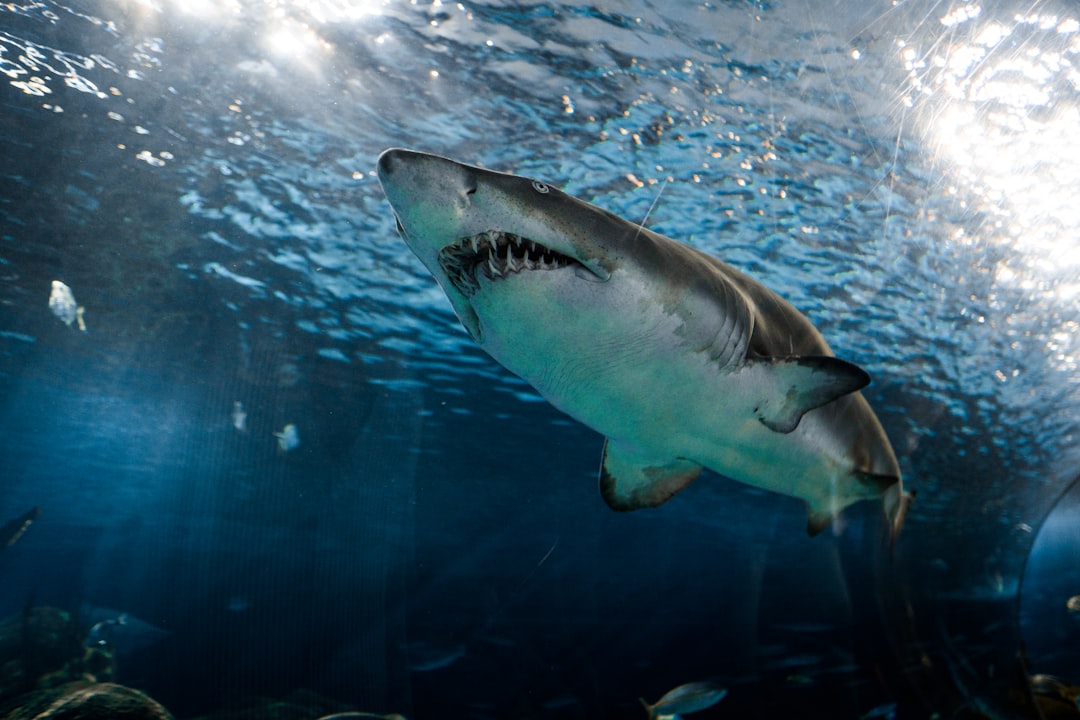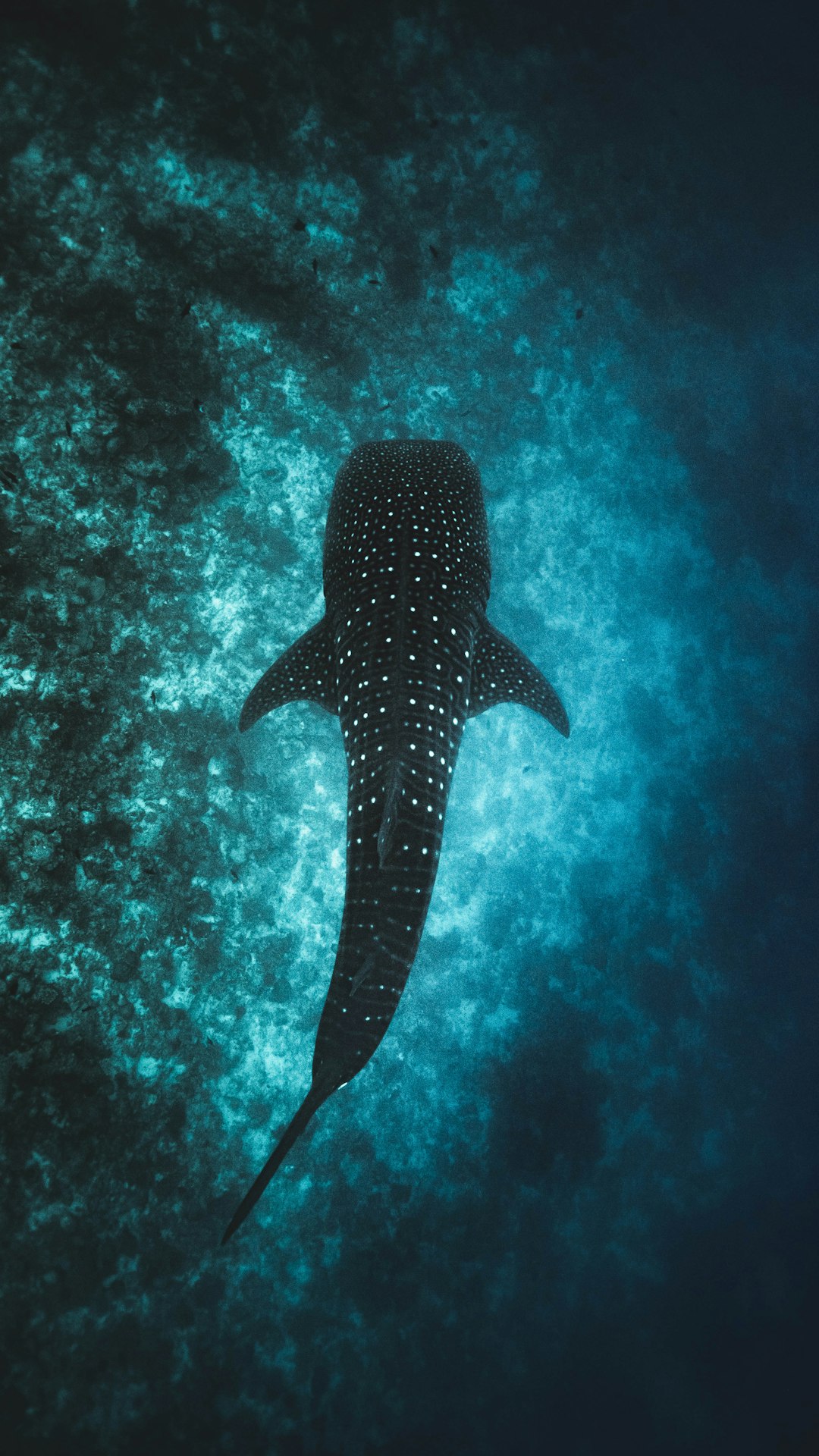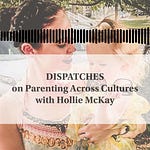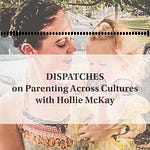“We kill 100 million [sharks] yearly. By 2050 we will have filled the sea with more plastics than fish.”
― Sy Montgomery, Tamed and Untamed: Close Encounters of the Animal Kind
As a child growing up in the 80s, synonymous with the “Jaws” era and its notorious John Williams theme song seared into the collective subconscious, Australian military veteran Paul de Gelder came of age in the sunburned outback with an extra nagging fear of sharks.
And then, on a murky and overcast morning in early 2009, while testing Navy equipment in Sydney Harbor, a bull shark ripped off the Paratrooper turned Royal Navy clearance diver’s right arm and leg.
He thought he was dead. Only a whole new lease on life emerged. In a somewhat strange twist of fate, the attack didn’t deter Paul from the waters nor from befriending sharks – it drew him deeper into the dark depths as a staunch advocate of protecting the elasmobranch fish.
“My biggest fears were always sharks and public speaking. I thought sharks were useless. I thought they were just these things in the ocean that wanted only to beat us and bite us and all that crap,” Paul tells me. “But I have gone from hating sharks to understanding how important they are in our world and what little interest they have in humans. The shark doesn’t give a shit about you; you aren’t what they want to eat.”
Now a staple of Discovery’s annual “Shark Week” and an author of the new book “Shark: Why We Need to Save the World’s Most Misunderstood Predator,” the now U.S.-based Paul is sounding the alarm when it comes to the fast-becoming endangered species.
He stresses the notion that human beings are not a shark’s chosen cuisine and notes that his onslaught stemmed from a scarce case of mistaken identity. After all, Paul was flapping around in a sleek black wetsuit and fins in the early hours beneath a low sun, the very time when the primarily nocturnal creatures wade into more shallow depths for food – namely seals.

Since the attack more than twenty-three years ago, Paul has surveyed, scrutinized and swum in the open waters with everything from Great White Sharks and Hammerheads to Blockheads and beyond. The salt-of-the-earth type figurehead wasted no time adjusting to his “new life” post-attack. A few days after the incident and while still relegated to a hospital room, Paul doggedly set about figuring out ways he could still jump out of planes, dive, workout and roam the earth with an eye for adventure despite the lost limbs.
“I didn’t want to wallow in self-pity and get stuck on the slippery slope of ‘woe is me.’ I just wanted to get on with life. I need my physicality back, and I knew my mind would follow,” he told me at the time, noting that he got down on the hospital floor and started with one-arm pushups within days of the incident.
However, the veteran's life today, with a mega platform to share a message of shark love and human resilience, may be even more fulfilling than his time-in-uniform.
“I don’t look back on it as a negative occurrence. It just happened. People around me have much harder lives than me,” Paul insists. “It’s not worth complaining about – you just get on with it. I have big dreams.”
Moreover, floating with the majestic animals in the wild – and standing up for their conservation, including becoming a prominent vegan against eating any sea or land beings – has become self-therapy for the survivor. When we first met in a Los Angeles newsroom in the Spring of 2016, Paul detailed with his dry-humored Aussie nonchalance that after being “ripped apart in the water,” they became a source of strength.
“The more you learn about sharks, the more you want to spend time around them. It’s about knowledge; knowledge dispels fear. We need them in the oceans. It’s not our backyard,” he asserts. “The more you can teach people about them, the more you can get people to respect animals and protect them. That’s what I want to do.”
Paul doesn’t necessarily see his role as leading the shark conservation charge but rather as a “conduit” to disseminate what he learns to his hundreds of thousands of fans and social media followers.
“There are so many people out there doing way more than I am. The difference is that I have a platform and can utilize all the work these other incredible people are doing to raise awareness, change shark fishing legislation, or teach people about sharks’ importance,” he continues.
Ironically, learning of Paul’s attack story years ago piqued my curiosity about our vast oceans – which make up more than 70 percent of our planet – and the life and times of sharks that soar through its shadowy depths.
On a recent trip to Hawaii, spanning Oahu’s surf-famed North Shore to the crystal blue seas of the Big Island’s Kona, I made it my mission to dive in the early hours with a twelve-foot, pregnant and graceful Tiger Shark to the requiem Galapagos and a regal White Tip reef shark chilling below a crater sixty feet down on the ocean floor. (The Hawaiian Islands are home to around 40 species).
It felt akin to a luminous daydream, fluttering through cool waters and streams of dawn summer light beside her silverly blue skin, an essential element of the ocean the same way the earthworm shields and recuperates our biosystem. Roxy helps keep the underworld in harmony, preserving flora and the strong and small, weeding the weak and keeping predator numbers in balance.
Sadly, her fin was pierced a deep red, and her jaw knocked out of alignment – evidence that at some point, she had been hooked and tossed back to die, which the shark experts told me almost happened a year or so ago as sightings showed a skinny, feeble mama struggling through the seas unable to move or sufficiently eat.
Now, Roxy is preggo. Generally, females (who grow larger than their male counterparts) stay away from the male subsects of the sea, Eric from Hawaii’s North Shore company “Shark Encounters” informs me. But it is the mating season (spring and summer), so the women – who have a gestation period spanning anywhere from nine months to more than three years – are dipping over the invisible lines.
Eric, a California native with surfer blond curls and an extra chill demeanor, suddenly turns serious.
“If we don’t change now, sharks will be extinct in 28 years,” he cautions darkly. “Sharks are important to our oceans; they keep the seaweed and algae healthy. If we lose them, we are going to lose what actually keeps the air and humans here.”
Another tidbit I learned: you have a significantly higher chance of dying from falling out of bed or being struck by lightning (1 in two million and 1 in a million, respectively) than being bitten by a shark. The odds of that happening is about 1 in 3.8 million.
But on the rare occasion, as Paul can attest, it happens.
Swimmers account for 26 percent of all shark attacks, followed by free divers/snorkelers involved around four percent, body surfers at five percent and scuba divers at four percent.
However, the pros assure me that almost always, it’s a case of confused identity. Sharks prefer to feast on seals, crustaceans, turtles, fish, and other sharks. The human body doesn’t have enough meat and fat to satisfy their burgeoning bellies, and if they do take a bite of a homo sapiens, they will commonly spit that yucky stuff out.
On another morning tucked inside the Big Island’s Kona, Carlos Barrios of “Jack’s Diving Locker” guides me down beneath the blue-green waves. An Army brat who bounced from base to base, he went on to join the elite FBI dive team. After retiring in 2009, Carlos started working as a scientific diver at an aquarium in Southern California, where his true bond with sharks was forged.
“There was a Tiger – pretty menacing looking, rows and rows of teeth. But they have so many they can’t close their teeth all the way. So I would get close, and it was a puppy dog almost, and when I had to lift the nurse shark to clean the sand underneath, it was the same thing,” he recalls with a smile. “If they can see you, you are certainly no threat. They can identify you and see that you aren’t on their menu. It is only when visibility is bad that attacks could happen because of misidentification.”

On average, there are around four to six unprovoked fatal chomps worldwide each year. When it takes place, of course, it makes headline news. But let’s be real, shark attacks are very few and far between.
And even though the resonance of the word “Shark!” while wading in the foam will almost always propel us to run for our lives, only five percent of over five hundred species of sharks have ever been implicated in a strike – provoked or unprovoked – on humans. So on the very unusual occasion that a shark’s impressive teeth meet human flesh, it will generally be a Great White, Tiger, or Bull.
Instead, it’s humans with blood on their hands. Humans slaughter upwards of 100 million a year. That converts to over 11,000 murders every hour. The majority of that comes down to international demand for shark fin soup. While China may be the largest buyer and consumer, I was shocked to learn that Spain was the world’s biggest supplier of the horrifically cruel killing method.
Eric tells me in haunting detail how the fins are severed, and the creature is often released back into the water. Without its fin, it cannot swim nor breathe and instead plummets to the bottom of the sea floor to suffocate and drown a slow and searing death.
“It has got to be the cruelest annihilation of a species or an animal I have ever heard of,” he says sadly.
European countries – led by Spain and followed by Portugal, the Netherlands, France and Italy –monopolize half of the Asian shark fin trade, according to the International Fund for Animal Welfare (IFAW). The EU technically outlawed the barbaric practice of slicing off the fin while the shark is still alive, but the landing and sale of whole sharks are still primarily permitted.
The finning, overfishing and pollution of the seas with plastic and other toxins are pushing sharks to extinction. Some species are already gone, while 25 percent are currently endangered.
“The sharks take care of the reefs, so this is a serious problem,” Carlos underscores. “And certainly, if you see fin soup on the menu, don’t buy that.”
It can’t be stressed more than sharks are pivotal to the well-being of the ocean and planet. As apex predators and natural-born hunters, sharks keep certain species from becoming too intrusive. They help support diversity in the seas, protect coral reefs, and balance the food chain. Furthermore, they sense out and opt to eat sick and weak animals (whale carcass is a delicacy), thus maintaining the health of two-thirds of planet earth. If sharks vanish, the ripple effect on the ecosystem, food security and human survival would be boundless.
“Sharks have these extra senses that help them feel any electric frequencies in the water, and that is how they determine what they are going to eat,” Eric explains. “Because they can decipher which fish is healthy versus unhealthy. Every heartbeat and muscle contraction is electrical, so weak heartbeats are the targets. Healthy fish are much harder to catch than one injured or on its last leg.”
Incensed, as I often am, but injustices that could have and should have been stopped a long time ago, I spend my hours out of the water seeking the various ways we laypeople can play a part. There is awareness, education, a bevy of shark and ocean conservation foundations doing extraordinary things, and then there is the emerging role of innovative Blockchain technology and Web3 collectives.
Most notably is Non-Fungible Tokens (NFTs)’ ascending role in education and fundraising. Organizations like Fins Attached have minted one-of-a-kind jpegs and videos to support expeditions, wildlife groups have banded together to form ConservatioNFT as a means to fund conservation initiatives globally,
Further, Decentralized Autonomous Organization (DAO) Diatom has brought to life a digital token backed by plastic extracted from the ocean, while fellow DAO Moonjelly has put together the “Ocean Impact” NFT marketplace. Fishcoin is a Blockchain-based seafood tracking project to help keep the seafood industry accountable. Sustainable lifestyle brand United By Blue is using its NFT collection to raise money for ocean cleanup endeavors. Dutch company Waste2Wear produces fabrics from materials sourced from Blockchain-authenticated plastics. SelaLabs aims to tackle oil spill management and ensure that the cleanup processes remain corruption-free by using cryptocurrencies.
That is just the tip of the iceberg, or shall we say, a small ripple in a GROWING pond of ways Blockchain technology is and can play a pivotal part.
Nevertheless, the reflective process of shark and sea exploration is something else I did not expect. I treasured the notion of disappearing like a weightless stick figure into the secret garden of life below the earth. I thought how enchanting it is to gently explore the marine community doing their thing far from the average naked eye. I reveled in slipping through the almost impossible sapphire alongside the colorful beings, free from distraction and noise and the problems of the above, with nothing but outstretched fingers and possibility.
Indeed, Paul isn’t alone in using the deep oceans as a means of meditation and healing as a veteran of the Armed Forces.
With just a quick delve into internet search engines, I learn about programs for active-duty troops and veterans inside aquarium tanks and expansive bodies of water as a kind of variation on the tried and true downward dog. It’s not just hanging out with the fish families and vibrant coral that has a calming effect, but the concept of carefully controlling your breathing becomes a self-sustaining therapy. The more one can experience how it feels to focus on nothing but buoyancy and maintaining breath with a regulator, the easier it is to reach that serene and measured place on dry shores.
It is only the ache of time running out that prevents me from just being.
“We need to change now. If we don’t, we are all fucked because it is reaching a tipping point,” Paul warns. “A lot of the Atlantic Ocean algae is dead now, which will cripple the whole ecosystem. We must stop poisoning the ocean with pesticides, fungicides, pollution, and all that stuff. We are raping the ocean of its lifeforce, and that is it. The world will keep on ticking, but as humans, we all be dead. We have to change now.”
CLICK TO READ MORE IN THE LIBERTY DISPATCH
Please follow and support my investigative/adventure/war zone work for LIBERTY DISPATCHES here: https://dispatch.libertyblockchain.com/author/holliemckay/
For speaking enquires please contact meta@metaspeakers.org
For those interested in learning more about the aftermath of war, please pick up a copy of my latest book “Only Cry for the Living: Memos from Inside the ISIS Battlefield.”
If you want to support small businesses:











